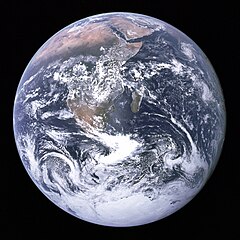What Were YOU Doing A Galactic Year Ago?
Think about what you were doing a year ago. For me, it was summertime, and I was probably working on a script for a fulldome video show. That was one EARTH year ago. One Mars year ago (687 Earth days), I was still working on exhibits for the Griffith Observatory and they were about to reopen. One Jupiter year ago (11.9 Earth years ago) I was just finishing graduate school. One Saturn year ago (29.5 years ago) I had just gotten married and was working for a school district. One Uranus year ago… well, my grandparents were just getting married. One Neptune year ago (165 years ago), their grandparents were probably just meeting. And, one Pluto year ago (248 years ago)… well, you get the idea.
So, what was going on one galactic year ago? That’s roughly the time it takes for Earth to make a trip once around the center of the galaxy (from our viewpoint out here in the spiral arms). It’s an incredibly long time — roughly 250 million Earth years ago (give or take a couple of dozen million years).
Fortunately, we weren’t around a galactic year ago. Why do I say that? Because if we were around then, we’d either be puzzling out one of the largest mass extinctions of life in Earth’s history. There WAS life on our planet at that time, but some 250 million years ago, it was already declining in the oceans, and was about to be nearly wiped out on land. This was an event called “The Great Dying” and it began around a galactic year ago. The formal name of the event is the Permian-Triassic Extinction, and to give you an idea of how extensive it was, about 9 in 10 marine species died out, and 7 in 10 land species suffered the same fate. This wasn’t the first or the last time that life has been threatened with extinction during our planet’s history.
 The best explanation for this mass extinction, backed up by data from studies of marine life forms and rocks that date back to that time, is that ocean life had been struggling along due to some toxic upwelling from ocean depths. It was gasping for breath, in essence.
The best explanation for this mass extinction, backed up by data from studies of marine life forms and rocks that date back to that time, is that ocean life had been struggling along due to some toxic upwelling from ocean depths. It was gasping for breath, in essence.
On the land, extensive volcanic activity was pumping grunge into the air and resurfacing the planet, which affected land life. And, at that time, the continents didn’t look anything like they do today, as you can see in Chris Scotese’s rendering of Pangaea
Anyway, to make matters worse, along came a huge impactor, perhaps 6 to 12 kilometers across. When it crashed into Earth’s surface, it did severe damage, and may have hastened the Great Dying that was already in progress. In any case, it was a major mass extinction event. And it happened about a galactic year ago.
Life did thrive again, as we see in the fossil records from the next few eras and epochs as the new galactic year wore on. It makes me wonder what the next one will bring. A lot can happen in a year!

